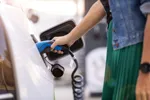If your environmental fleet policy is based on selecting cars on CO2 emissions, you might not be as green as you thought.
Martin Ward, CAP manufacturer relationships manager, told the Fleet News Green Summit last week that the CO2 figures quoted by the manufacturers are effectively fixed.
Unlike fuel efficiency figures which, while difficult to achieve in real-life motoring, are comparing like-for-like under EU Directive 80/1268/EEC, carbon emissions are
self-certified by the manufacturers.
According to Ward, some manufacturers put additives into the fuel to reduce the CO2 output, while others fix the levels by relentless testing under special conditions.
Tests take place on various rolling roads across the world, and some are known to produce better results that others.
One manufacturer spent eight months perfecting its
technique to hit the CO2 target specified by its head office. No driver would ever get close to achieving the same figure.
The DfT does inspect the manufacturer’s testing labs and will witness some tests being carried out, but it’s easy to see how such a vague approach can be side-stepped.
What does all this mean for fleets? At face value, not much.
Capital allowance write downs are based on the paper figure provided by the manufacturer.
However, there is a broader environmental concern.
Plenty of large organisations, especially those working in the public sector, quote their carbon emissions as proof of their green credentials.
Those figures might not be based on accurate information. The cars they have selected on the back of the paper figures to cut their CO2 emissions might not be the best ones.
More transparency and a like-for-like comparison test would enable fleets to more accurately make decisions.
You won’t be getting a paper copy of Fleet News next week.
Over the summer months Fleet News is going fortnightly.
Each of the issues has been given a theme which is intended to give you the vital information you need to help you make better business decisions.
It will also mean they are bumper issues, so you won’t be short of reading!
Those issue dates/themes are: July 16 fleet funding and finance – choosing the best options for your fleet; July 30 new technology – vehicle and equipment; August 13 fleet safety – drivers and vehicles; and August 27 the eco issue.

















Login to comment
Comments
No comments have been made yet.